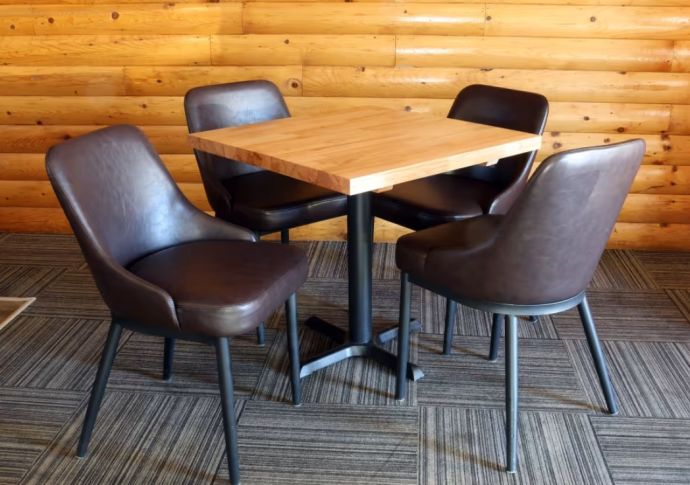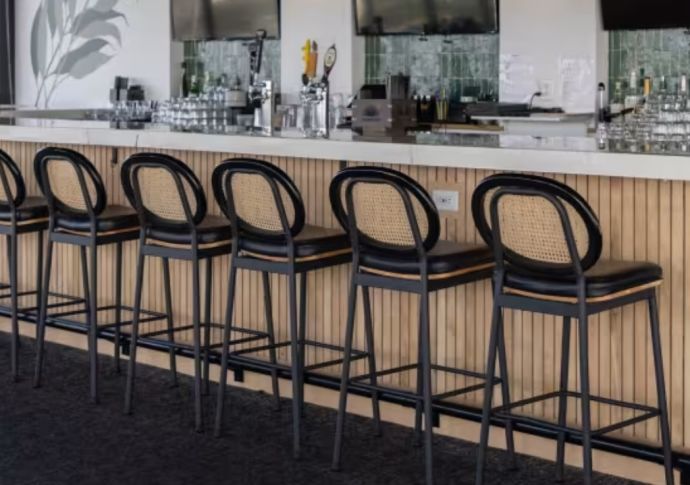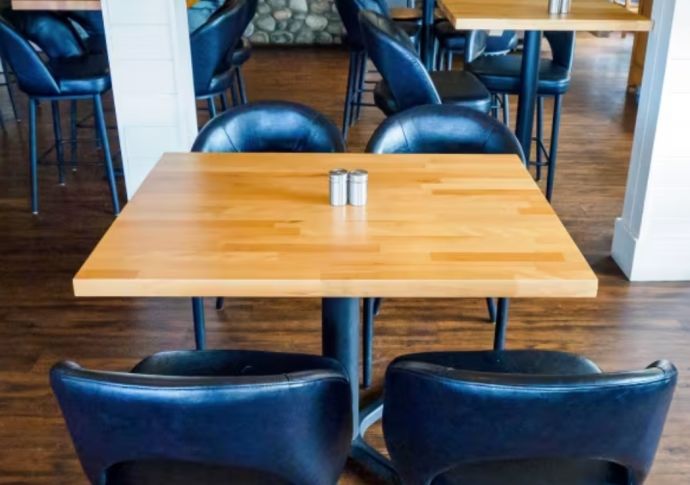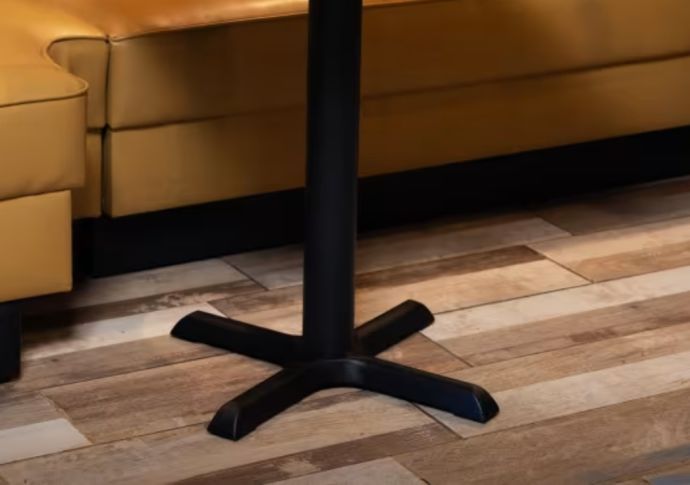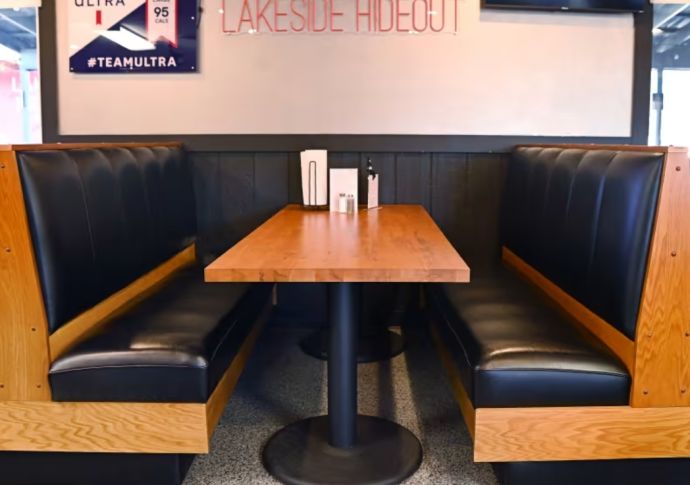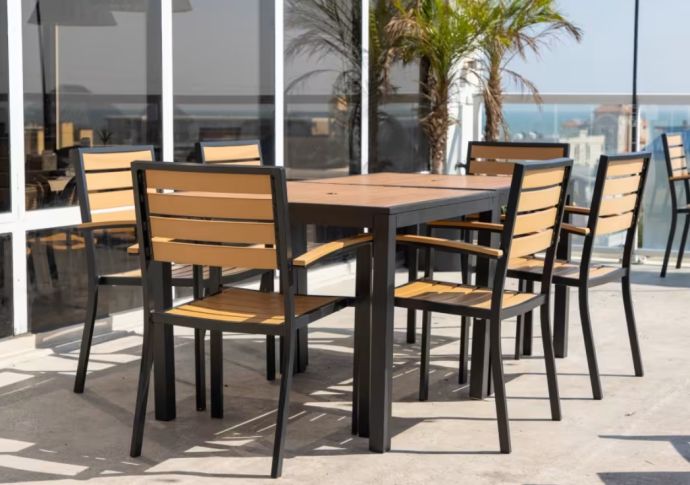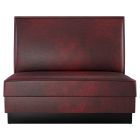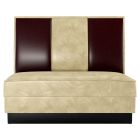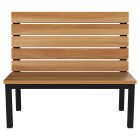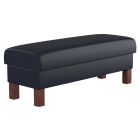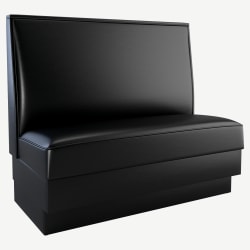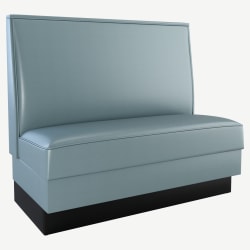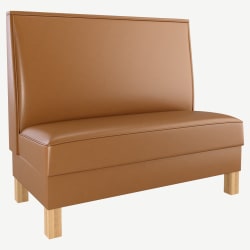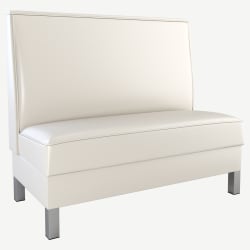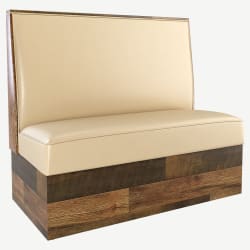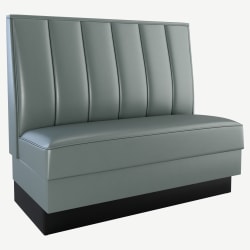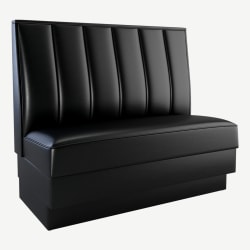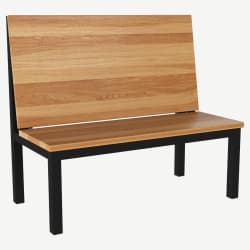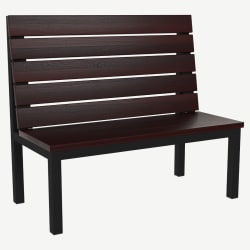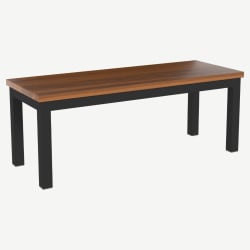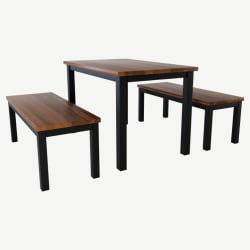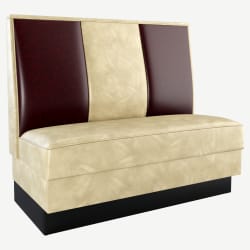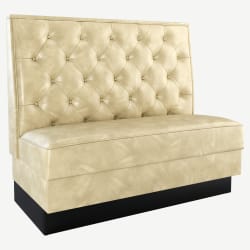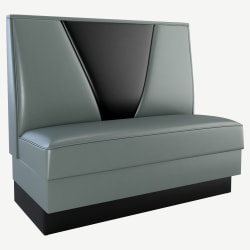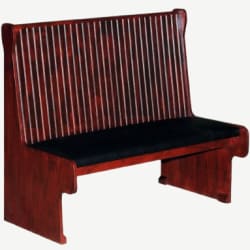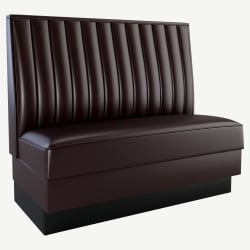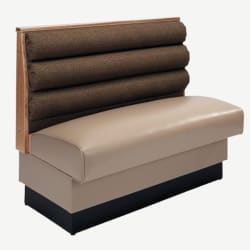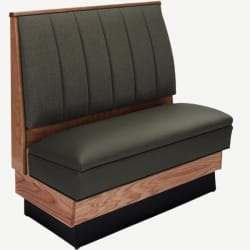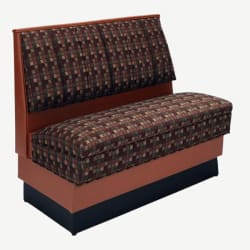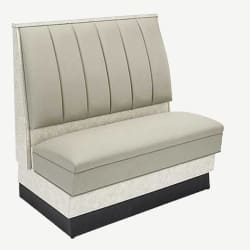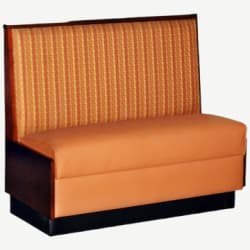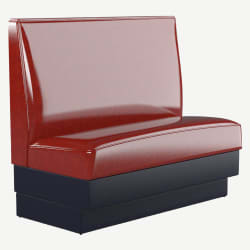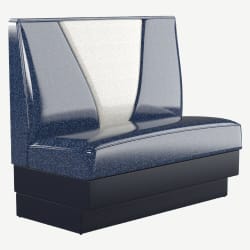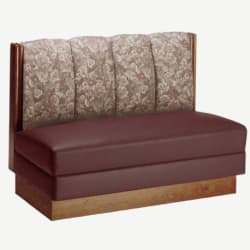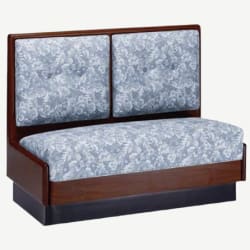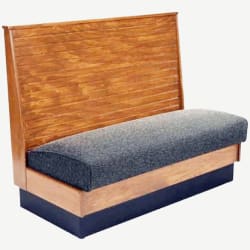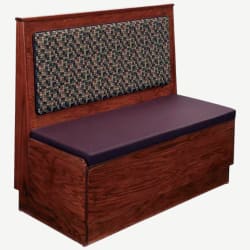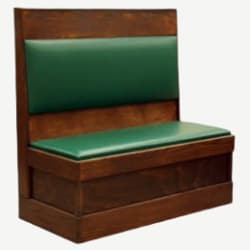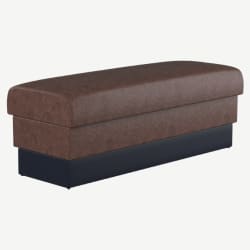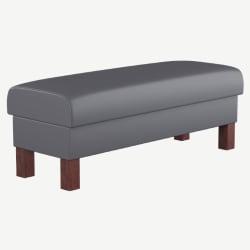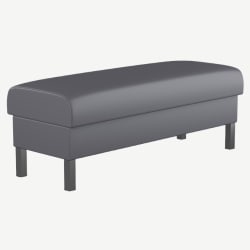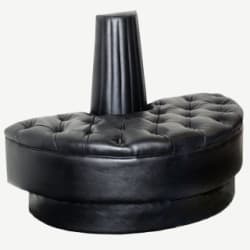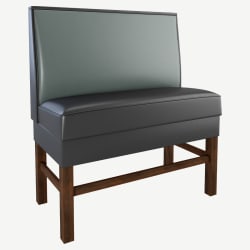Restaurant Booths
4 Tips for Choosing Restaurant Booths
Aesthetically, booths add a warm and welcoming touch to any décor. From a visual standpoint, a linear arrangement of booths can create a clean and tidy look that appeals to the eye. When properly aligned, the booths can create a sense of order and symmetry in a restaurant, contributing to a pleasing overall aesthetic.
1. Choosing Materials
The materials a booth is constructed from directly impacts the customer experience. It is therefore important to choose materials that make sense in your restaurant’s interior. As well, customer comfort needs to be taken into consideration. When choosing your booth, consider the following items.
- The materials should match the décor. For rustic and farmhouse style venues, wood booths would be an appropriate choice. These booths can offer semi or fully-padded backs and seats, while the wood finish blends with the rest of the design theme. For modern and contemporary spaces, a padded vinyl upholstered booth would be the best bet. For upscale and fine-dining, one could consider a fabric upholstered back, or even a button tufted option. Whatever your décor style, ensure that the booth matches your theme.
- The materials need to be up to the job. Essentially, choose materials that are appropriate for their intended use. For example, a fast-casual or high-traffic family diner would probably not opt for fabric as their choice of upholstery, as it can easily stain and is moderately difficult to clean. As well, fabric may not stand up to constant, heavy use. A choice of durable vinyl upholstery is more in line with this type of demanding use.
2. Style, Shape, and Length
Booths come in a range of styles, shapes, and lengths, offering customization options to suit any décor theme. Most of our booths are fully customizable, with shapes including single, double, wall bench, L-shape, ½ & ¾ circle. Booth length and height can also be customized, further allowing a fit in a variety of hospitality settings.
The first thing to consider when choosing a shape and length is space constraints. The dimensions of the available space will largely dictate the size and length of the booths. It's important to ensure that the booths fit comfortably within the space without crowding or impeding customer flow.
Flexibility is also important. Consider the flexibility of the booth configuration. Depending on the layout of the restaurant, it may be necessary to have booths of varying sizes and lengths to accommodate different party sizes.
3. Color
Choosing the right color for your booths is essential, as the design of the booth directly impacts your décor. Choosing colors to compliment your restaurant’s color scheme is important. Consider the color of the walls and other furniture and choose colors that either match or strategically contrast your existing décor.
4. Upholstery
The texture and patterns of the booth’s upholstery plays an important role in defining the aesthetic of your venue. Consider textures and patterns that align with your theme. For a modern restaurant, solid colors and subtle patterns would be appropriate, while in a rustic setting one may opt for a solid wood booth without upholstery. Floral patterns and vivid vinyl colors would suit a retro or vintage theme. For high-end dining and traditional venues, one may consider tasteful fabric upholstery or button tufted booths.
Frequently Asked Questions
How Many People Can Fit in a Booth?
- Single Booth - Seats up to two people comfortably side by side
- Double Booth - Seats up to four people with two sitting side by side and two more back-to-back
- Deuce Single Booth - Similar to single booth but measures 30” instead of 48”. Seats one person
- Deuce Double Booth - Measures 30” long instead of the standard double size of 48”. Seats two people back-to-back
- Wall Bench - Offered in various lengths, this style of booth is usually paired with tables and chairs, allowing for comfortable seating and enough room in the aisles for servers. The amount of people it will fit is determined by the length
- L-Shape Booth - Often used in corners where other furniture doesn’t fit. Will seat four to six people
- ½ Circle Booth - Standard dimensions of 48” x 90” x 48”. Seats four people
- ¾ Circle Booth - Standard dimensions of 48” x 90” x 90” x 48”. Seats six people
How Much Space is Needed For a Booth?
The minimal space needed for two booths facing each other is 70” if the table is 24” wide. The wider the table, the more space is needed.
What are Restaurant Booths Made of?
Restaurant booths are typically constructed with durable wood frames, and springs and dense foam padding are added for the back and seat. They are then upholstered with vinyl or fabric. While most booths are fully padded, others can be crafted with semi-padded backs. Wood booths are constructed with either a solid wood back and seat or upholstered.
Glossary of Terms
- Top and End Caps - The caps are placed on the sides and top of the booth to cover the frame. There is a choice of upholstered, solid wood, or laminate caps
- Head Roll - A head roll is a cushioned, upholstered component at the top of the booth for added customer comfort
- Crumb Strip - A crumb strip measures 1 ½” in width and is designed to be placed between the back of the booth and the seat to facilitate ease of cleaning
- Welt Cord - A durable cord stitched to the sides of the seat for added visual appeal and strength
We hope this information helps you determine the best booth for your venue. If you are still unsure of the style, length, and shape needed for your individual space, please contact our team of industry professionals. We can help guide you toward the perfect booth for your specific needs.

